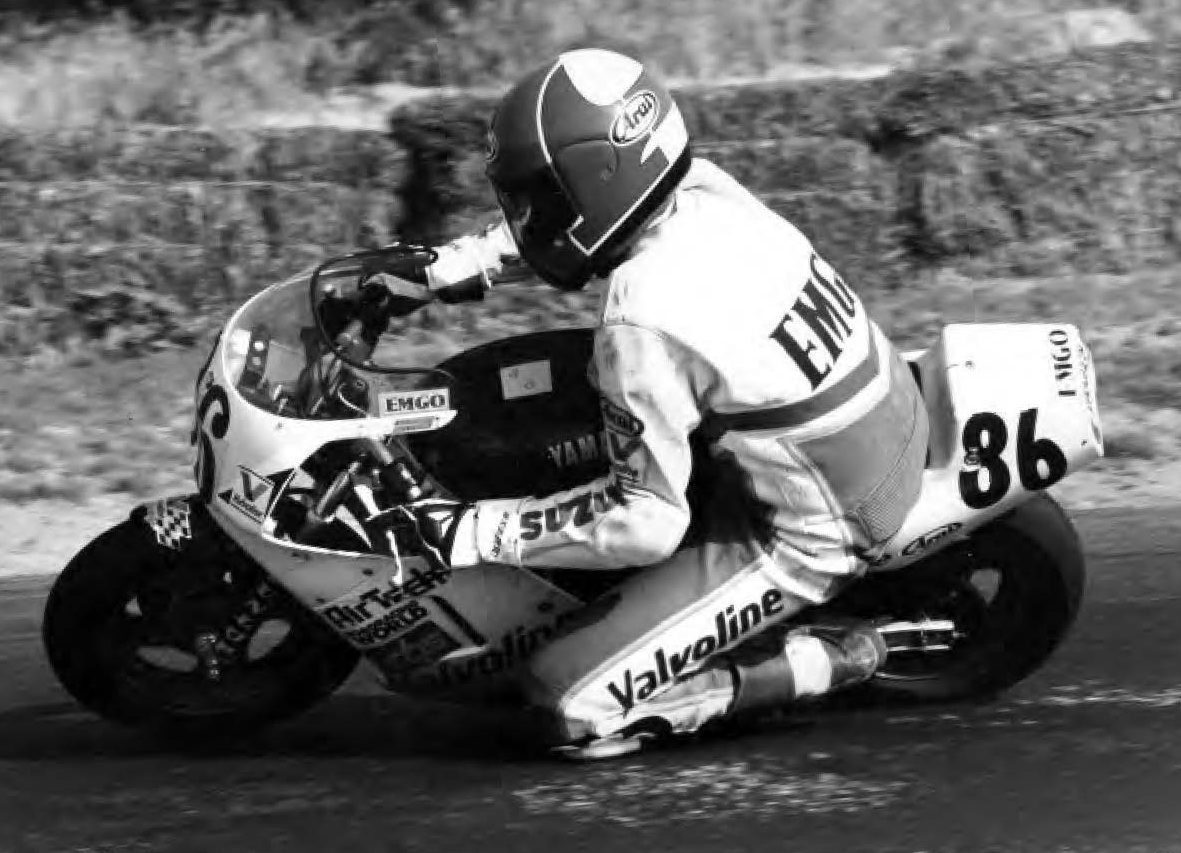Part 4 of a series, reprinted from the April 2011 edition of Roadracing World & Motorcycle Technology Magazine. Copyright 2011, 2015, 2020, 2024. All rights reserved. www.roadracingworld.com
First Person/Opinion: What I Have Learned
By John Ulrich
Kids who really want to race are going to race sooner or later, one way or another. They may have to wait until they turn 18 (like I did), scrounge up second-rate safety gear and jump on some poorly-prepared, ill-handling pile of junk they put together themselves or get from somebody else, but they will race. If you’re a parent and you can, you’re better off accepting that fact and doing what you can to help your kid race as safely as possible, with the best gear and best-prepared, most reliable racebike you can get your hands on.
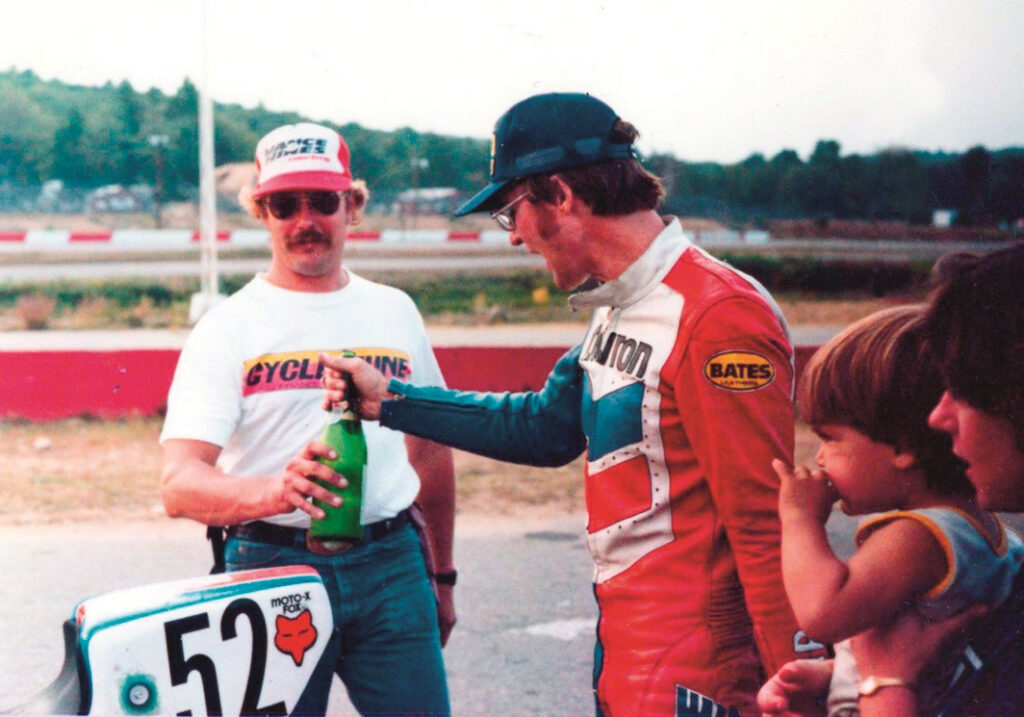
Not all kids want to race. I have four kids. One wanted to be a racer from before he was five years old. The other three had other interests. Nobody can keep a racer from racing. Nobody can make anybody who doesn’t want to race, race. Don’t even try it.
Mini-clubs holding events on kart tracks are excellent places for kids to start racing, riding small-displacement miniature motorcycles like a Honda NSR50 or a converted-to-pavement-use small dirt bike. The parents of many young racers have found that access to racing makes an excellent carrot, providing very strong motivation for a kid to act right and do well in school. Racing can also help teach important life lessons, including being where you are supposed to be, when you are supposed to be there. For example, if you’re not on the grid in time, race officials are not going to wait for you before throwing the green flag.

Kids need a Plan B. Very few young racers will actually be able to make a career out of racing. They may have a lot of fun, make great friends and learn valuable life lessons, but turning racing into a paying profession is an extreme long shot. They need a back-up plan, and that starts with doing well in school and learning a trade or profession.
Kids are going to get hurt, whether you let them race or not. One of my kids rode his bicycle out into the street and got hit by a car when he was seven, suffering internal injuries and spending six weeks in the hospital. One of my daughters fell and crashed into the piano while running shoe-less in the house at age five, trying to make the corner between the living room and the hallway, and broke an ankle—five minutes after I told her for the millionth time not to run in the house. My other son broke his first bone riding a Yamaha YSR50 on a kart track, after he asked me how to do a plug chop and I neglected to add, “make sure you do the plug chop early enough on the front straight that you still have room to brake normally and make the pit entrance without flying end-over-end into a chain-link fence.”
If an ambulance delivers your seven-year-old after he’s been hit by a car and he has internal bleeding, nobody at the hospital will blame you for the kid getting hurt. If you bring your five-year-old daughter into the emergency room with a broken ankle and tell the doctors that she fell while running in the house and hit a piano, you won’t get too much grief from doctors and nurses. If you show up with a 13-year-old boy who crashed his YSR50 on a mini-bike track (while trying to do a plug chop) and broke his arm, you will get a lot of grief. The parents of a 13-year-old girl who is in the emergency room at the same time and has almost the identical arm injury—but suffered when she fell into a hot-tub while running on wet concrete—will not get any grief.
Exactly what a kid starts racing on doesn’t matter as much as it matters that the bike be well prepared and safe to ride, with no parts falling off or critical systems failing at the wrong time. If the brakes don’t work right, the throttle sticks open or the chain is prone to falling off, making laps without incident becomes a lot more difficult, especially for a youngster. Don’t worry about buying the fastest bike or getting more horsepower out of the bike you have for a beginning racer. Worry about making sure the bike works right, handles well and has good tires on it.
Racing is a lot like playing the piano. The more practice you get, the easier it is to do. The more laps a kid makes on the racetrack, the easier it is for them to race, and the easier it is for them to improve.
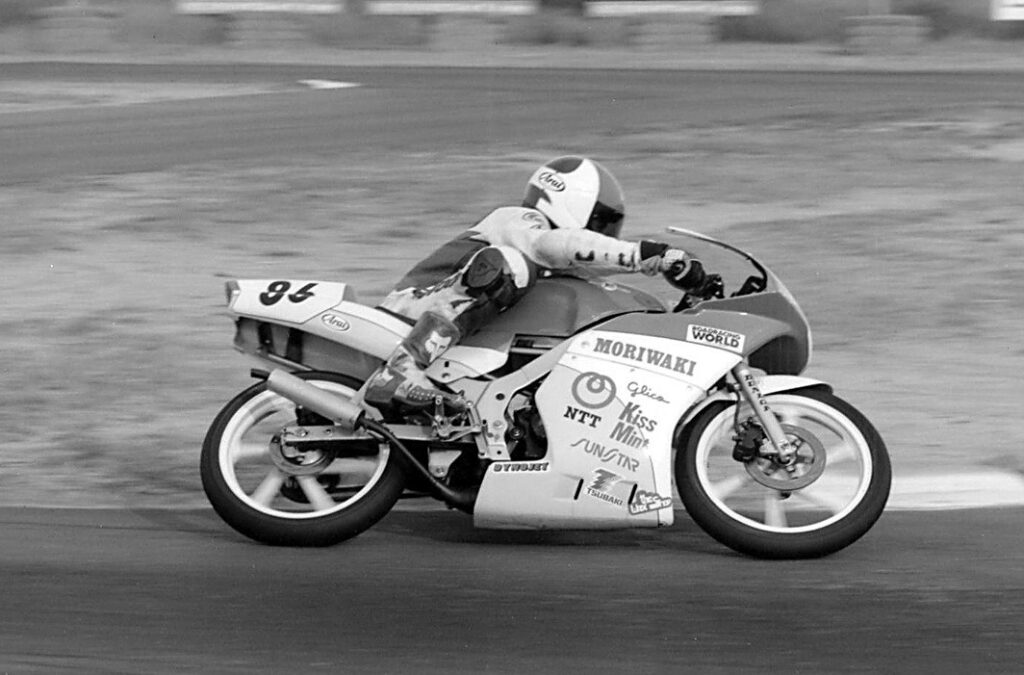
Don’t be in a hurry to move a kid up. It’s a big jump from something like a Honda NSR50 to a Honda RS125 or a Moriwaki MD250H. It’s an even bigger jump between a 125cc GP bike like the RS125 and a 600cc Supersport bike, in every way: Physical size, weight, horsepower and sheer speed. The fastest I ever got a 150-pound Honda RS125 going was 124 mph (based on gearing and rpm). A 370-pound 600cc Supersport bike will push over 175 mph under the right conditions, and is a lot easier to crash. Lots of very successful riders have come up through two-stroke 50cc, 80cc, 125cc and 250cc purpose-built racebikes before making the move to larger, four-cylinder four-stroke racebikes. These days, riding a 650cc twin-cylinder four-stroke is a lot more common (and practical) than riding a 250cc two-stroke, but serves the same purpose. The same is true of racing a four-stroke Moriwaki MD250H instead of a two-stroke Honda RS125. And it’s OK to keep a young rider in a given class until they can run at or near the front consistently.

Kids tend to pressurize themselves at the races, and the bigger the races and the faster the bikes, the more that can be a problem. The last thing they need is an adult adding to the pressure by telling them they better go faster or that they have to win. I try to keep kids calm and encourage them to work on incremental improvements in their riding during the course of a race weekend.
Big, professional event weekends that host races for young kids must be approached with caution. Too many parents of kids entered in races held at big events seem to think that it is their kid’s one and only chance at a lucrative career, and that he or she better perform well in front of all the professional team managers at the track.
But in reality nothing any young kid does on any given day is going to land them a professional ride or any extra support of any type, and the only people who really care about where a kid finishes already know the riders involved. In my opinion, a lot of kids are better off racing and honing their skills as part of a club weekend, without a big crowd and without the self-imposed (or parental) pressure that comes from racing during a pro race weekend.
Kids and their parents shouldn’t even think about racing at big events until the kid is mature enough to handle pressure, create reasonable expectations for themselves and deal with disappointment without throwing a fit. Kids will be better prepared and will get better results if they figure out how to race, get used to their racebike and learn racetracks at club or regional events.
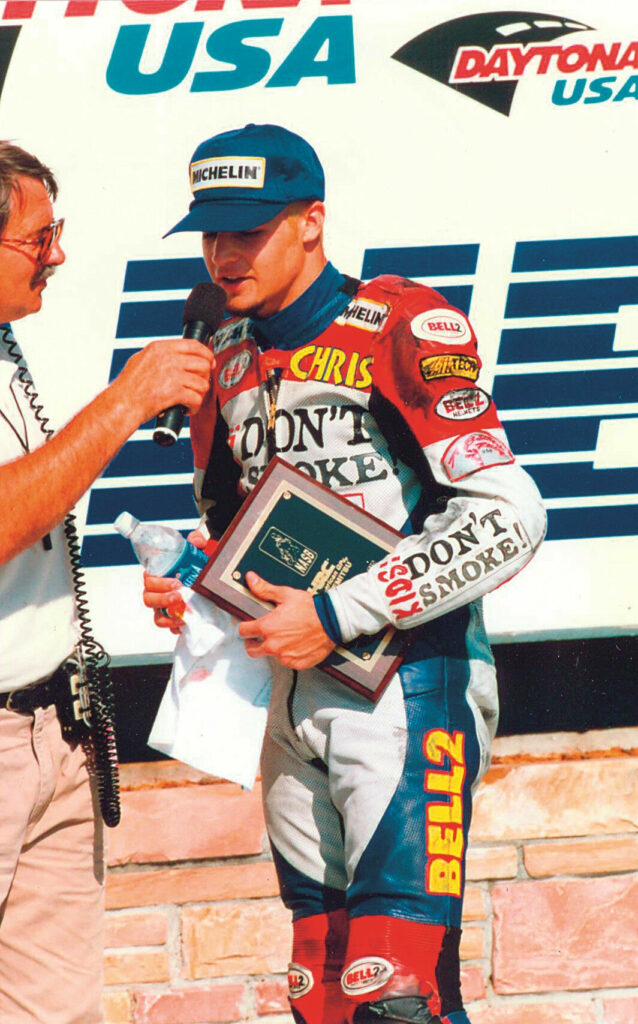
Some race weekends are going to be a lot more fun than others, and some race weekends are just going to be bad. Kids need to know that up front, and to realize that one frustrating race or one bad race weekend is not the end of the world. Once during an AMA Pro weekend at Road America, a 17-year-old who rode for my team hit a bump and crashed out of the lead entering the Carousel on the first lap of one of his races. Then he gridded up and crashed out of the lead of his other race in the same place, on the same bump, also on the first lap. I found him up in the rider’s lounge of my semi-truck, tears running down his face as he sobbed, “I-I-I-I’m s-s-s-s-s-orry.” I told him, ‘Don’t worry about it, everybody crashes and if everybody didn’t crash, we wouldn’t all have to wear uncomfortable leathers on hot days! It’s OK, we’ll go to the next race and try again.” He went on to win multiple AMA Pro Championships and graduated to a career in the 500cc GP/MotoGP World Championship.
Fast forward to the 2010 AMA Pro weekend at Road America, when 16-year-old Elena Myers (who rode for my team at the time) crashed out of both her races, both times on a bump entering Canada Corner. She wasn’t crying when I found her, she was just mad! Every kid is different, and often, every situation is different.
Sometimes, especially in difficult conditions, all I’ve wanted to do is to see a kid finish a race on two wheels so we could regroup and come back to race on another—better—day.

One young rider who rode for me in the 1990s was crashing way too much, sometimes three times a weekend. “Don’t even try to win,” I finally told him. “Don’t even worry about going fast. Just remember why we all started riding motorcycles—because it was fun. Go back to that, and concentrate on having fun.” He was finally able to do that, and suddenly he was finishing on the podium in every race he entered. He went on to a fabulous career in AMA Pro Superbike.
Another very nice, polite kid who rode for me not only crashed way too much, but worse still, he kept getting hurt, usually suffering a concussion and often breaking major bones. No matter what I told him, he kept crashing, and he kept getting hurt. I tried everything. I told him not to worry about results. I told him just to have fun. I even told him that the last thing I wanted to see was him getting carted off in the ambulance again after he crashed one of my bikes. Nothing worked. I finally figured out what was happening by talking to the kid’s friends. As soon as I finished telling the kid to have fun and left the immediate vicinity, his stepfather would tell him that this was his one and only chance for a professional career, and that he better go out there and go fast right now. He left the team, ended up estranged from his stepfather and finally quit racing altogether.
Nothing good comes from crashing. One year I had two riders in AMA Pro who each averaged one crash for every 1400 racetrack miles they covered. My third rider averaged one crash every 200 racetrack miles, and a friend of mine had a kid who may have set a world record with an average of one crash every 50 racetrack miles! Whether it’s a race or a qualifying session or a practice session, finishing on two wheels counts!
I’ve always been on the lookout for talented young riders. One of the ways I used to scout new riders was to ride with them on the racetrack. One time I was racing a Honda RS125 in a WSMC Formula Three race at Willow Springs and found myself involved in a pitched battle with a 14-year-old on another RS125. The kid wasn’t very heavy and was able to out-accelerate me in a straight line, but I used every trick I knew to stay in touch with him. A few laps from the finish, I started going wider, turning and getting back to full throttle and under the bubble while he was still running around at partial throttle on the inside of the final turn on the track. I’d roll off a little to keep from passing him at the line and tipping him off. On the last lap I set up for the corner and timed everything perfectly, sailing past him just before the finish line. After I came in and took off my helmet, I went over to where he was pitted to explain to him what I had done and why it had worked. As I walked around the corner of the trailer he was pitted out of, his father was yelling at him, “Why did you let that old man beat you?” I just turned and walked away, but I felt bad for the kid—and for the dad, who had missed a perfect opportunity for the kid to learn something that could have made him a better racer.
These days I rely on my son Chris Ulrich—the 13-year-old with the plug-chop problem mentioned earlier, now a seasoned AMA Pro Superbike rider—to do my on-track scouting; his reports were key in my decision to sign Martin Cardenas in 2007, as a replacement for an injured rider on my team.
Another way I scout riders is to watch them from trackside, and to look at their stats, compiled by pouring through AMA Pro Racing timing and scoring data and by looking at MyLaps.com AMB transponder reports from various regional and club races. I’m less interested in seeing a single fast lap than I am in seeing consistent fast laps and an improving trend during a race weekend and during a race season. I also try to judge a rider’s lap times and results against my evaluation of their equipment.


Over the years I’ve worked with dozens of very young racers in one way or another, and I’m proud that I was able to help launch several into fantastic careers. Some people seem to resent that my own son was among the riders I’ve helped race. I’ve never really understood why some critics think it was OK for me to spend my own money to help Mrs. Hopkins’ 15-year-old kid John or Mrs. Spies’ 15-year-old kid Ben or Mr. and Mrs. Myers’ 12-year-old kid Elena or Mr. & Mrs. Solis’ 13-year-old kid Benny, but not OK for me to help Mr. and Mrs. Ulrich’s 13-year-old kid Chris.
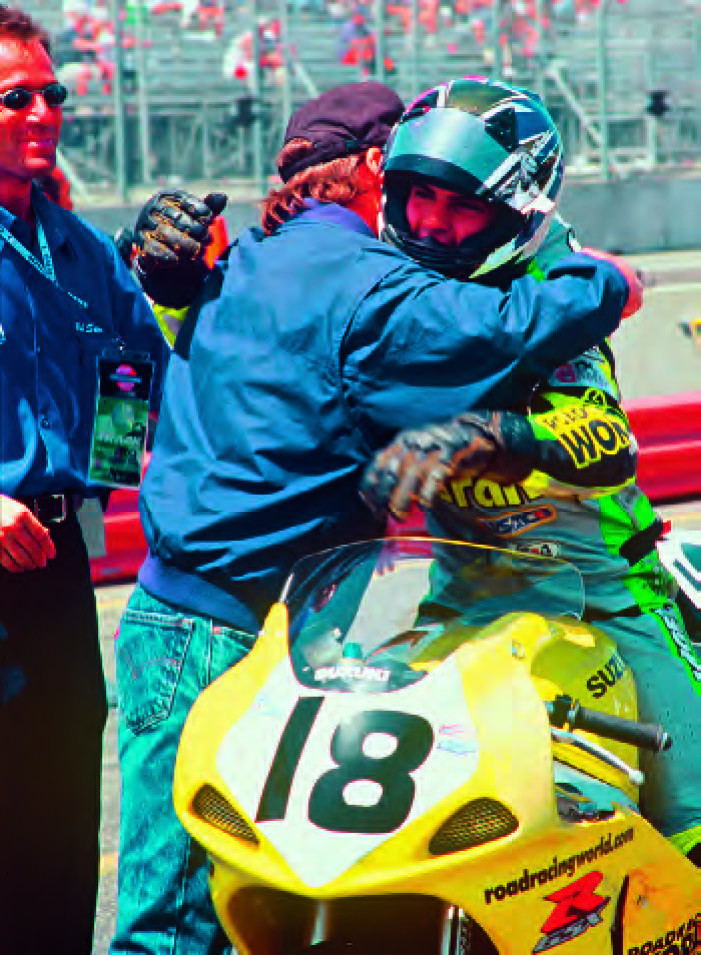
But it doesn’t matter what anybody else thinks: I’d do it all over again. I had a lot of fun taking Chris racing and watching him progress from winning on a Yamaha YSR50 and on a Moriwaki MH8OR at CMRRA races held on kart tracks; to winning WERA National Challenge Series races on a Honda RS125; to finishing third in the AMA Pro 250cc Grand Prix Championship on a Yamaha TZ250; to becoming the first (and only) second-generation overall WERA National Endurance Champion; to winning AMA Pro Nationals on a GSX-R and becoming a team owner in his own right.
One thing that was I completely unprepared for, was discovering that when your own kid does well in racing, it feels 10 times better than anything you ever accomplished in racing yourself. I found that out the first time Chris won a CMRRA race, and when he won his first AMA Pro National race, it completely blew me away.
It’s been a wild ride taking kids racing, including one of my own. For the most part, it’s also been incredibly rewarding, and I wouldn’t have missed it for anything.

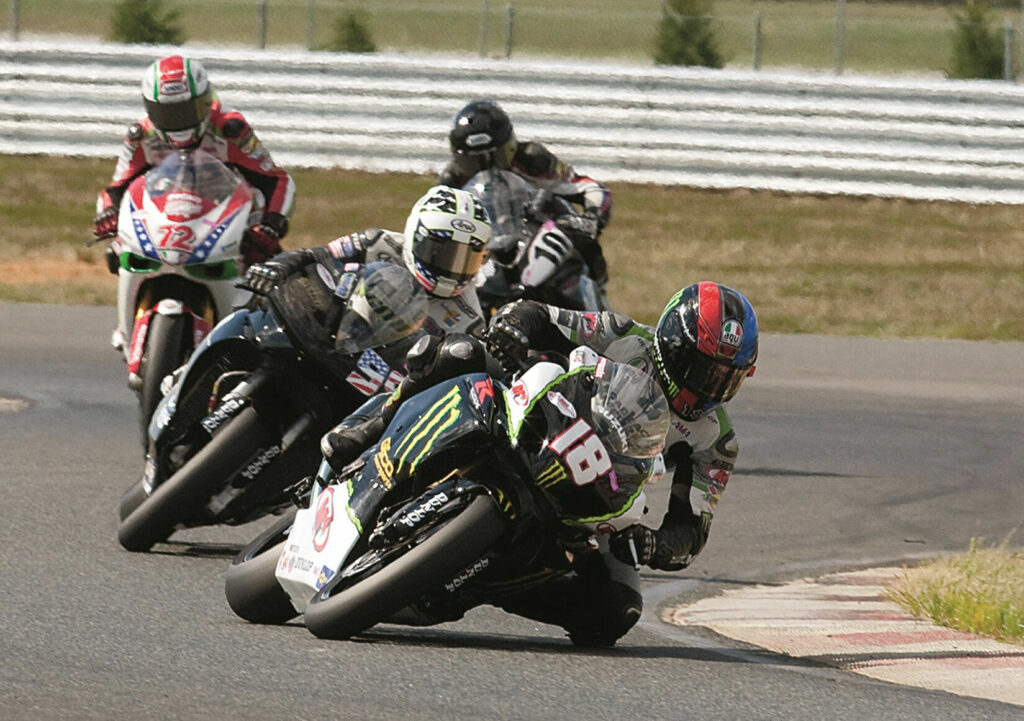
Check back tomorrow for the next installment of Taking Kids Racing.






